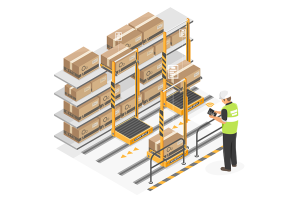by Independent Contributor, Peter Alkema – Head: Purchase to Pay at ABSA
“The Purchase-to-Pay (PTP) value chain is a series of business events that are usually enabled by a system such as SAP. Knowledge of this process, as well as the physical steps within the enabling system is critical to drive a culture of world-class procurement within an organisation where third party spend is significant.”
The figure below shows the generic PTP value chain as supported by the
SAP enabled process in a large financial services company. This figure
is consistently included in all communications to stakeholders,
suppliers and users to drive a consistent message about what PTP is.
Creating this awareness of the PTP principles supports a thorough
training framework that can be based around this. This particular
company has even modified its SAP log-in screen to include this figure
so that all users that log-in will continually be reminded of this
every time they log-on to the system.
Training, like the scenario above, can be prepared and presented in two main categories, namely:
- Project-based training; and
- Business-as-usual training.
Project-based training will usually be required to prepare a user community for a major system change or entirely new system. Material will be grassroots level and the conducting of sessions will usually coincide with the User Acceptance Testing (UAT) phase of the project. Careful co-ordination is required, since the user community will also be involved in testing the system, and updates can be made as the system is taken into production. “This introduces a high degree of flexibility in both the presenting and preparation of the material which must be taken into account by the training team on the project. Typically there will be a training system that is synchronised with the latest development system to ensure that trainees see the latest version of functionality as far as possible”, Peter Alkema, Head: Purchase to Pay, ABSA, told SmartProcurement.
Business-as-usual training is the consistent refreshing of current users and the training of incremental new users once the system is live and being used for purchasing in a live environment. Typically when the system is mission critical, such as Purchasing or Human Resources, it is best practice to link a person’s access with their training certification. Users will have to undergo a test before they can be created as a user on the SAP SRM system. This forces the users of the system to be more competent because they will be unable to purchase anything until they have been trained. However, in an environment where usage of the purchasing system is ramping up, this can create a drag on increased usage because of the overhead in administering and presenting training. Should the facility be in place, it is ideal for a procurement department to allow the training team within a company to take ownership for booking and training of new users. This will require a ‘train-the-trainer’ approach which is very popular in reducing the workload of SAP skilled individuals, who are usually few in number, overworked and unavailable.
Often a large organisation will have standards that must be adhered to when creating training material. This ensures a common look and feel for all training sessions that are presented to user communities. Icons and pointers / guides in the material will all be set down by the central training team. However, the content may vary, but must be presented with the common icon library and page layout that is required. Standards also ensure that employees become familiar enough with the training approach that they are able to attempt some self-training, and then just complete the exercises once they are proficient.
In SAP, there is a tool called SAP Tutor, which allows for the creation of animated prompts in a recorded screen capturing mode. As opposed to static, two-dimensional material, this allows for a dynamic self-teaching training mechanism.
The better the training program, the less the calls will be to a company’s call centre. Nonetheless, there will always be a need for first-line support, where trained individuals are available to answer basic queries. Where more complex questions could not be answered, a Frequently Asked Questions (FAQ) section is always very useful, and if consulted, may be less likely to take up the time of the call centre staff. A FAQ can, however, only be developed in conjunction with feedback from other training and testing sessions, whereby the most common questions are compiled together with standard answers. Training is also not just about being proficient in physically using the system, but also understanding the underlying purchasing culture, relationships with suppliers and the general environment. This will ensure that users are choosing catalogues on the system that are updated and based on contracts that have been signed with supplier as a result of a thorough sourcing process.
“Ultimately, competent and trained users mean the right catalogued items are being purchased in the right way from the right suppliers. Training needs analysis can also be done to ensure that management focuses available teaching capacity to the right areas with the right content levels. Most importantly, is and must be, the common definition of PTP so that all training courses (business and system focused) can talk to the same model each time and create a framework for each course’s content”, Alkema concluded.
In next month’s article there will be a detailed focus on the physical purchase order, wherein we will consider the different kinds that can be generated and submitted on the system to commit the organisation to a contractual relationship with a supplier to provide goods and / or services.


























